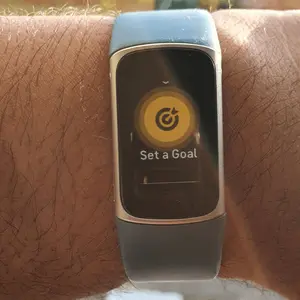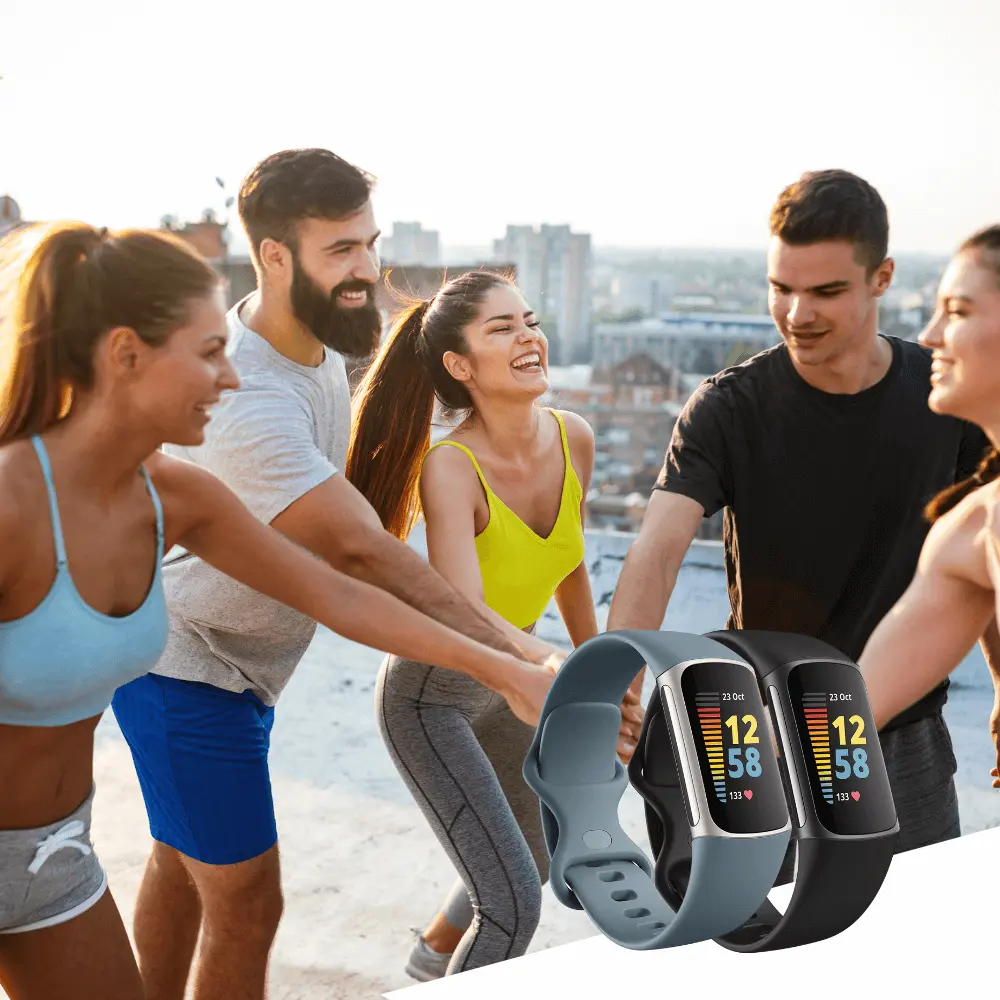Fitbit : Set Workout Goal To Maximise Effort
I currently own a Fitbit charge 5 and a Fitbit luxe. Ever since I have brought these wearable devices I have never used the set goal feature. I would normally tap on the workout mode, tap start and away I go. However last week I only discovered the set goal feature for the first time by accident. I have now used the set goal feature in all my workouts for the past week and I absolutely love it.
Set workout goal can help you push through your workouts a lot stronger. Not only that, I have also discovered that set goal can work within your limits.
In this article I will share with you my experience in using the set goal feature and share my experience that would hopefully give you ideas to apply with your workouts.
So What is Set Goal
To put it simply, set goal does exactly that, allowing you to set a goal. Set goal gives you a range of options on what goal you would like to achieve, and can only be activated when you select a work out mode.
Before you push start simply scroll down and you should and select the set goal feature. Select it and there will be a few options presented to you which are
- Active zone minutes
- Calories
- Time
- Distance (running, hiking, cycling, elliptical trainer)
Please note that you can only select one goal, You cannot stack multiple goals into one single workout session, so keep that in mind. Once you have settled on what goal to set, you can then press start and begin your work out.
Also the distance set goal is only available to 4 workout modes which is running, hiking, cycling and elliptical trainer.

Use The Daily Readiness Score To Determine Your Set Goal
I always find the daily readiness score valuable, and over the past week I have managed to align it fairly well with the set goal feature. If you are not familiar with the daily readiness score, it’s a premium feature by Fitbit that takes in all of your sleep, stress, physical stress and heart rate variation data and evaluates this information into a simple score. Higher the score means your body is able to handle a high amount of physical stress, a lower score means that you have to take it easy and focus on recovery workouts like walking.
Let me show you how I have aligned the Daily readiness score with the set goal feature. It will be based on the daily readiness score (DRS) training type and set goal.
Monday : DRS 80 / Heavy Full Body Weights Session / Set goal 50 zone minutes
I wasn’t sure if I should go for a hill run or weights but decided to do weights, just felt strong on the day. My weights session went for 70 minutes and managed 60 zone minutes. I was constantly looking at my watch making sure my heart rate stays above 110 bpm to stay in the zone.
Tuesday : DRS 50 / Hill walk / Set goal 40 zone minutes
Hill walks are a good work out, either on the treadmill or outdoors. Don’t matter, any elevated walk will test you. My DRS score really reflected how my body felt today because I overreached the previous day, so lessons were learned. Reached 40 zone minutes fairly easily and stopped, but was extremely taxing on the body.
Wednesday : DRS 40 / Full body Weights Session / Time 60 minutes
Body battered from the previous 2 days. Every time I begin my set my heart rate will spike from 110 to 149 bpm. Focus is going at least 70% of my working set and concentrate on my breathing to bring my heart rate down in between sets. Was a good session but an absolute grind.
Thursday : DRS 15 / Walking and stretching / Time 70
Didn’t sleep well so recovery wasn’t the greatest, not to mention a bad day at work where stress is high. Going for a walk to calm my nerves and doing stretching or yoga to bring my stress levels down. By far my best work out session for the week.
Friday : DRS 71 / Boot camp / 30 zone minutes
Good sleep increased my DRS score today and I decided to do a bootcamp today. Bootcamp is intense, it’s a 30 minute session that just goes all out from the get go. Managed to go alright, and did a 20 minute stretching session in the end, and still felt okay at the end.
And there you have it, my week’s experience using the set goal feature aligned with the daily readiness score. I think the 2 features work together really well.
My Experience Using The Set Goal Feature
I absolutely love this feature and as I reflect on the workouts completed, I feel that it’s making me accountable in my work out effort. I also feel that setting a goal before you start your workout helps you prepare mentaly. Once you commit, I think it allows you to put your best foot forward and really go for it.
However, what is the point of setting a goal if you haven’t prepared well? If you don’t manage your stress, over reach your workouts and manage your sleep very well then the set goal feature will be an absolute grind.
If you look at my workout week I didn’t really prepare well at all. I started out with a good daily readiness score on Monday then it projected downwards quickly which is something to consider when planning your activity times.
The daily readiness score is your body’s capacity to absorb stress. My example is a true reflection of what can happen in your fitness journey. You have your ups and downs however this is the whole point in me writing this article. I tested the feature and shared my results, but overreached. To get the most out of the set goal feature, you must prioritise your daily readiness score. It was an assumption at the start of my test but it does align true.
Final Conclusion
I have to say that the set goal feature is indeed a good feature. I only stumbled across this feature by accident but after only 1 week using this feature I found it to be excellent value.
So who would benefit in using this feature? Well after a week using this feature I would say that anyone who is short on time and would like to maximise that time. For example when I look at my daily routine I only have 60-70 m minutes per day, and I always want to maximise my effort in that time. Which is the real reason why I find this feature of great value.
Finally I also mentioned that the set goal feature can work within your limits. So how do you do that? Well it’s the daily readiness score. Remember that the DRS is your body’s capacity to withstand stress so you should change your workouts to adapt to that score.
Finding a workout routine within your DRS score can be difficult. As a tip, if you are already committed to doing a certain exercise routine, pay attention to your recovery in between sets and scale down if need be. Or if you are going for a run, hike or cycle reduce your distance.
The point I’m trying to make is for you to take note of your body’s reaction to the activity. Recovery workouts are an essential part in your fitness journey. Not only that it’s about training smarter and progressing forward. I will do a future article on picking exercises based on the DRS in future.
Thank you so much for reading and I hope you found this article helpful. Give the set goal feature a go. It’s definitely provided a positive impact in my fitness journey.

